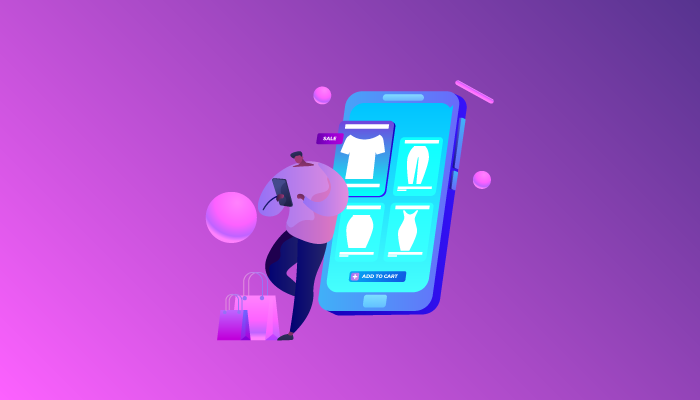The Role of UI/UX Design in Driving B2B Conversion Rates

In our contemporary world where an ever-increasing number of businesses are operating and giving more importance to their online stores than before, it comes across as no surprise that businesses are now constantly seeking newer methods to boost their conversion rates and effectively generate more leads.
Factors such as the quality of the product offered and the pricing of the same play a crucial role, but all efforts put into it are bound to go down the drain if the customers do not have a good user experience with the online store that the business has set up. A thoughtful user interface and user experience design can empower businesses to create a seamless and enjoyable customer journey, ultimately driving higher conversion rates.
Unlike common misconceptions, the power of good UI and UX applies to B2B (Business-to-Business) Businesses too! In this blog, we’ll explore how good UI/UX design influences B2B conversion rates and why investing in a well-designed user experience is essential for the CRO of B2B businesses.
Builds Trust and Credibility
Building trust and credibility among clients is crucial in the B2B landscape in order to ensure consistency and growth of your business.
A well-designed user interface conveys an image of professionalism and reliability to your clients. A clutter-free and aesthetically pleasing interface would offer your business the advantage of an extremely good first impression. Seeing that you’re serious about your product instills a sense of confidence within your clients about the kind of relationship they could potentially build with your business and the products you have to offer.
Good UX Design would further contribute to the image you’ve built up so far by offering a smooth, intuitive, and efficient user experience. Customers are more likely to explore the product or service on offer in further depth when they’re feeling secure and in control of the environment they’re surrounded by. An easy-to-use interface combined with logical workflows would further help build trust in your product.
Offers your customers a Personalised experience.
Crafting a tailored UI for your platform gives your business a remarkable and much-needed edge in an already competitive landscape. Throughout history, personalization has proven to be a potent tool in the business realm, and its influence extends seamlessly to driving conversions. When aiming for conversion success, a bespoke UI experience enables businesses to incorporate personalized content, recommendations, and offers based on individual user preferences and behaviors.
In this context, UX design assumes a central role in effective personalization strategies. By delving into user behaviors and preferences, skilled UX designers can construct dynamic interfaces that adapt to each user’s unique needs. Whether it involves suggesting relevant products or showcasing recently viewed items, personalized UX fosters engagement and motivates users to take the desired actions.

The beauty of personalized experiences lies in their ability to make users feel valued and understood. Establishing such genuine connections becomes instrumental in cultivating long-term brand loyalty among your esteemed users.
Enhances User Engagement
Crafting a positive user experience is essential for boosting user engagement and increasing the duration of their stay on your platform, which ultimately benefits your business. When the UI is thoughtfully designed, it captivates users’ interest, spurring them to explore the platform further. Engaging visuals, strategically placed call-to-action buttons, and seamless navigation all contribute to sustaining user interest.
Intuitively integrating a search function, providing personalized content recommendations, and ensuring a responsive design works harmoniously to create a seamless user experience journey. Such small yet significant touches lead users to spend more time on the platform, which in turn significantly improves the chances of converting them into potential leads or loyal customers.
Streamlining Complex Processes
In the realm of B2B businesses, operations tend to involve intricate processes, setting them apart from their B2C counterparts. Precise quoting becomes paramount, as any inaccuracies in orders could lead to substantial losses compared to the B2C scenario. Additionally, meticulous management of invoices and accounts becomes a necessity.
Despite B2B apps offering comprehensive functionalities, they often neglect the aspect of user-friendliness, which should ideally make business operations seamless. A well-designed UI comes to the rescue, simplifying processes and making the app more accessible and less overwhelming for users. By providing a clear and straightforward interface, users are guided through each step, thereby reducing the likelihood of errors or misunderstandings.
A positive User Experience entails not only meeting user needs but also anticipating them and addressing potential pain points proactively. Auto-fill options, intuitive progress indicators, and helpful tooltips can aid users in comprehending and navigating through seemingly complicated features.
Ultimately, an effective UI/UX design ensures users can achieve their objectives efficiently, leading to boosted conversion rates and the smooth streamlining of complex processes.
Presence and Responsiveness on Mobile Devices
Business has always thrived on its dynamic nature, and when coupled with the ever-evolving internet since the 2000s, it becomes an unstoppable force, demanding adaptation or risking obsolescence for those dependent on it. The internet now holds a profound influence on our world, and the credit is partially owed to the surge of mobile devices.

The B2B landscape has warmly embraced mobile devices as they facilitate on-the-go business transactions. Consequently, it becomes paramount for any B2B enterprise to provide a robust, mobile-responsive design on their platforms. An intuitive and mobile-friendly design becomes instrumental in enhancing conversion rates and driving more business.
A responsive UI guarantees that the platform seamlessly adjusts to diverse screen sizes and devices, ensuring users enjoy a consistent and delightful experience across all platforms. Mobile UX design expertly addresses the unique challenges posed by smaller screens, touch interactions, and limited bandwidth.
By optimizing the mobile experience, businesses can capture a wide array of potential leads and customers who predominantly utilize smartphones and tablets for their transactions. This strategic move expands their reach and bolsters their competitiveness in a rapidly evolving digital landscape.
Conclusion
In today’s fiercely competitive B2B landscape, the role and impact of good UX design are immeasurable. It extends far beyond mere aesthetics, encompassing optimized functionality, seamless navigation, and enhanced usability for the end user. To succeed in implementing an effective UI, understanding the target audience, their needs, and pain points is paramount. Crafting a personalized and intuitive user experience that addresses their specific requirements fosters a strong connection and cultivates long-term brand loyalty.

A good UI and UX pose extensive benefits for B2B businesses. Firstly, it increases brand awareness by leaving a positive first impression on potential customers. Secondly, it enhances customer satisfaction as users effortlessly access the information they need. Additionally, it results in reduced costs by minimizing customer support calls and driving more sales organically using existing infrastructure.
Long story short, remember these key considerations that drive your B2B Conversion rates –
- Facilitating users in finding what they seek is fundamental. A well-designed UI ensures easy access to information, whether it’s a product page, blog post, or contact form, reducing redundant pages and boosting conversion rates. Employing clear and concise language builds trust and credibility with potential customers, leading to more conversions. Visual elements like images, videos, and infographics engage users, making the website visually appealing and captivating.
- Considering the prevalence of mobile devices in this day and age, ensuring the website’s mobile-friendliness is essential. A user-friendly and navigable interface on small screens enhances the overall experience.
- The power of personalization has always been under-utilized in the B2B sector. B2B businesses can employ targeted content, recommendations, and logins to create experiences that resonate with each user, thus providing the targeted business audience with the products that would be a perfect fit for their organization.
In conclusion, a well-designed website with an exceptional UI and UX serves as a valuable asset for B2B businesses. By investing in user-centric design, these businesses can enhance conversion rates, amplify brand awareness, bolster customer satisfaction, and achieve cost efficiencies, effectively positioning themselves for sustained success in the competitive market.
The Value Proposition of Indian UX Agencies for US Businesses







